Worried about future handwriting issues? Have your toddler do planks!
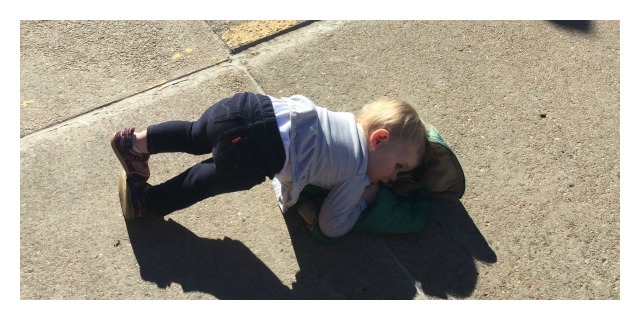
Although Reagan loves to watch, imitate and mostly get in the way of my husband’s daily core routine, my toddler has not yet mastered the plank.
However she does spend a lot of time running, climbing up on and over everything and navigating the stairs on her own – while I try not to have an anxiety attack.
We have made it a purpose since her birth to keep her out of restrictive devices and to constantly challenge her muscles.
And while we highly value physical fitness – and wouldn’t mind breeding an olympic athlete – we know that her core strength is directly related to her overall health, cognition and success in school.
What does core strength have to do with handwriting?
Fine motor skill development is only possible if core strength and stability is present.
In order to effectively control arm movement, a child must already have proper muscle tone and stability in her trunk. Once this strong, solid base is established, the arm and hand are free to make the precise, coordinated movements need for drawing, cutting and writing.
Angela Hanscom, an OT and founder of TimberNook (a nature program in New England that helps kids remediate sensory and behavioral issues through outdoor play), agrees:
In order to have good fine motor skills, you really need a strong sense of body awareness and overall strength in order to support more fine motor work. – Angela Hanscom, MOT, OTR/L
So should all kids go to occupational therapy (OT) now to build their core so they have nice handwriting? Is it just trendy or are there actually more kids who need OT these days?
Let’s all go to OT!
I would be surprised today if you don’t know a kid, teach a kid or have a kid that is receiving occupational therapy services – who doesn’t have special needs.
Are there more kids with fine motor, core, balance and sensory issues today?
Do children really need that much more help with handwriting than 25 years ago?
Pediatric occupational and physical therapists all seem to agree that number of children receiving services has increased significantly in the last 25 years.
According to the U.S. Bureau of Labor Statistics, the job outlook for pediatric OT’s looks good! The need for these professionals is expected to increase by 33% between 2010 and 2020.
OT’s used to mainly serve students with severe disabilities such as cerebral palsy; however, today many students are going for therapy who need help holding their pencil correctly and struggle with handwriting issues.
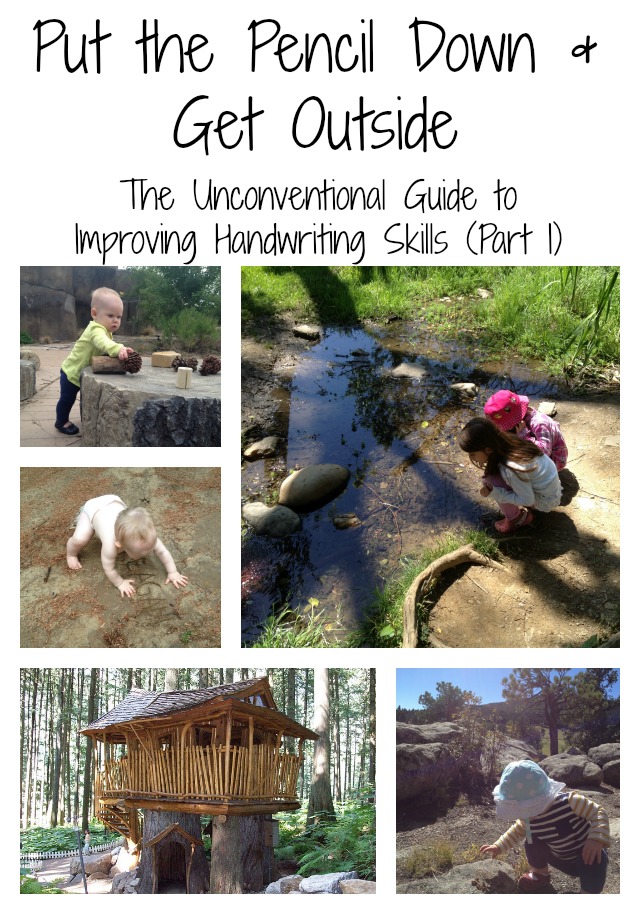
Angela Hanscom thinks that today’s children definitely need help. At one school Angela worked with, she found that most children in the classrooms tested had poor core strength and balance.
When she compared this to data from the 1980’s she discovered that only 1 in 12 kids in these current classrooms had normal core strength and balance.
And these were all typical classrooms – they did not have a higher proportion of students with special needs.
Who needs a fidget toy?
As an early childhood teacher, I would recommend at least a couple students every year get evaluated by an OT – and have at least one or two students already receiving services when entering Kindergarten.
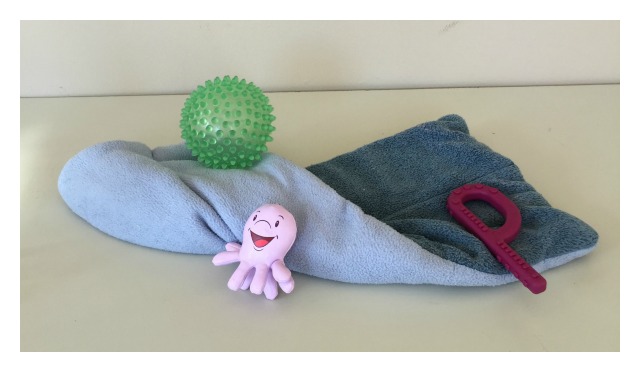 I love working with diverse learners and have pulled out tons of different accommodations for my students:
I love working with diverse learners and have pulled out tons of different accommodations for my students:
- weighted lap blankets
- bumpy cushions
- small balls of wax as fidget toys
- silky ribbons for sensory seekers
- water bottlers / gum
- movement and song breaks
- Brain Gym to work on crossing the midline
…the list goes on and on.
I don’t think I am spoiling my students. They really need these things and I see the benefit. So why can’t they just sit there and learn like the good old days with nuns and rulers?
I can’t help but think that something more is going on. The consensus seems to be that it’s a combination of the type of lifestyle our kids lead these days and growing demands and pressures of the classroom from an early age.
Unfortunately, despite how pressing this issue seems to be, little information is being shared with educators and parents about the importance of gross and fine motor development and the consequences of it not being up to par.
Ditch the expensive gadgets & toss your baby on the floor.
Bumbos, bouncy seats, exersaucers, jumpers, car seats, high chairs – you name it. There are a million and one ways to contain your baby.
Look how even simple things like high chairs have changed since I was a baby!

Today we are blessed with so many crazy gadgets and gear for babies we often fall guilty of frequently restricting our babies’ movements.
As a result, physical therapists are now treating more and more kids with motor delays who have no history of medical issues or orthopedic/neurologic impairments.
I had the opportunity to speak with Stacy Menz, a pediatric physical therapist and founder of Starfish Therapies. She has a Masters and a Doctorate in Physical Therapy and is a board certified pediatric clinical specialist. She is the managing editor of Impact and is actively involved in research.
Stacy shared her knowledge on why we are seeing more kids with core strength, balance and fine motor issues.
There are a few things that I think have changed. I think that we are busier as a society and that convenience makes life easier. In this way, I think we have developed products for kids that they enjoy and make adults lives easier, such as bouncy chairs, click and go car seats to strollers, etc. With each new product, kids are spending less and less time unrestricted to explore movement and develop strength as they ‘learn’ how to move.
For instance, with the Bumbo seat, kids are being placed into sitting earlier and earlier, however they may not have the core strength to maintain good posture so they start to compensate. With development of the sitting skill (without the aid of the Bumbo) kids are developing the core muscle strength and motor planning that they need to not only get into the sitting position, but be able to support themselves.

Modern convenience is hurting us.
Research tells us that babies need to spend lots of time on their tummies to ensure proper motor development which leads to increased strength and overall fitness as children and even adults.
In 1992, the “Back to Sleep, Tummy to Play” campaign urged parents to put their children on their backs to sleep instead of in the prone position (on their bellies). Since then the number of children dying from SIDS has decreased by 50%.
This is significant and important. I am a strong believer in following the American Academy of Pediatrics recommendations for putting your baby to sleep on his back until age 1.
However, the part that is taken less seriously (and understandably since it doesn’t increase the risk of infant death) is the importance of tummy time.
Babies should spend most of their waking hours on the floor. Research studies show that infants who have limited time in the prone position have delays in motor development and infants who experience more tummy time achieve milestones sooner.
Each little wiggle on the floor is a significant exercise that is helping the baby develop motor coordination. Tummy time helps babies develop a mature, stable hip position along with hand eye coordination – not to mention it also helps with their digestion!
The first step to shaping fine motor development is to ensure that your baby starts off on the right foot by getting the exercise she needs to develop a strong, stable core.
No children in the woods.
If you haven’t read Richard Louv’s Last Child in the Woods, I highly recommend it from both an educator’s and parent’s perspective.
A baby’s ability to move freely is very important in helping him develop proper core strength and gross motor skills. However, what about our preschoolers and elementary age kids? Shouldn’t they be moving too?
Unfortunately today’s children are spending far less time outdoors or engaged in unstructured play – the exact thing they need to continue to develop and strengthen their core and stabilizing muscles.

In 2012, only 50% of 4 million preschoolers surveyed had at least one outdoor play opportunity each day.
This study and this study both show that kids’ outdoor activity has decreased significantly since 1981, with children’s participation in unstructured outdoor activities falling about 50%.
A British survey in 2003 showed that while adults played outside at least 7 times per week as kids, only 23% of their children did the same.
From 2007 – 2008, participation in outdoor activities for 6 – 17 year olds declined by 11%. In addition, the sharpest decline was with the youngest kids – aged 6 – 12!
Why are children spending so little time playing outside? What is this doing to our children?
There are many reasons why kids are spending less time outside today. These range from parental fears about safety (even though kids are actually safer today than 25 years ago), kids being overscheduled in activities outside of school, more school work and just more stuff to do inside.
Kids spend 7.5 hours outside of school in front of a screen.
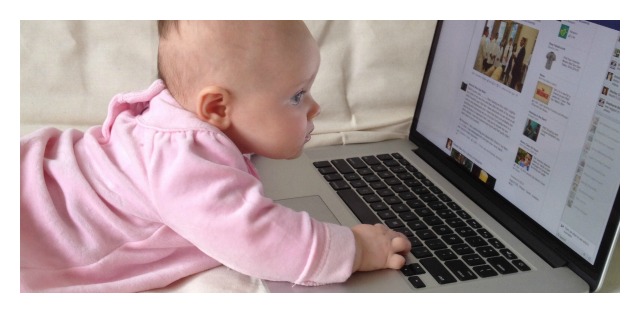
Children are spending most of their day in one position. They are doing much less of the things that are traditionally nostalgic of childhood when kids seemed to have hours after school, on weekends and endless summers to participate in somewhat risky, unscheduled and unsupervised play.
Kids are meant to be wild and climb trees, jump on rocks across the creek, build forts, roll down hills and rough house.
I remember climbing and standing on the top of the swing set, flipping off backwards from swings, building sledding tracks with moguls, nailing boards and stringing ropes in trees (my tree house), playing manhunt in the dark and even once playing a neighborhood organized game of Red Rover on rollerblades.
Unfortunately we don’t see our kids doing much of this anymore.
With that type of play slowly disappearing, what is happening to our children?
I invited a few pediatric physical and occupational therapists to share their expertise on what has changed in the last 25 years and why we are seeing more kids with core, strength and balance issues.
Angela Hanscom, OT and founder of TimberNook mentioned earlier in this post, is a strong believer in outside play.
More and more children are spending time in an upright position. Meaning they are not moving their bodies in all different directions. This is causing problems with establishing a strong vestibular system (balance) and is really affecting their ability to pay attention, have good body awareness, and maintain a strong core.
Also, because children are spending less time playing outdoors, they are not participating in as much “heavy work” as they used to. In other words, they are receiving less feedback and input to their muscles and joints over time.
This is creating less awareness of their limbs in space. Less movement and outdoor play is also contributing to a decreased overall strength.
Chanda Jothen, a pediatric physical therapist and founder of the blog Pink Oatmeal agrees:
In the past 20-30 years, research has shown that children don’t have as much free time, aren’t getting outside as much as they used too, and there has been an increase in screen time.
Outdoor unstructured free play is where kids have the opportunity to build strength, balance, and coordination. Due to this decline in active free play kids are missing out on the opportunity to work on these skills.
Teaching to the test and the extinction of recess.
Let’s face it – Kindergarten is the new 1st grade. Pre-K is the new K and suddenly kids are missing out on “Everything I need to know I learned in Kindergarten” – cutting with scissors, sharing, the taste of paste… I’ve taught both K and 1st and I see the sad trend.
It’s no secret that what’s to blame is increased and higher stakes standardized testing.
Whether teachers and administrators agree with it or not, the pressure is real. Receiving a failing grade means that schools lose funding and teachers lose jobs.
This completely changes the school environment. Young students are forced to spend even more time sedentary with pencil paper work at desks or tables, extended circle time sitting on the rug and dwindling time spent in outdoor play.
Cutting back recess is real.
Twenty-three schools in Orange County, FL are currently limiting or eliminating recess. Teachers are using the extra time to help students prep for mandatory standardized test.
After so many snow days last school year an entire county close to where I lived in DC cut recess back to 10 minutes a day to catch up on academics!
I personally experienced this at one public charter school. When administration changed over one year, I was suddenly not allowed to take my combination 1st grade/Kindergarten class out for a second recess.
These 4 to 7 year olds were expected to attend to class from 8am – 4pm (there was already an extended school day) with only one 20 minute recess break. I was told by the principal that we couldn’t afford to lose academic time in the classroom.
Is it too late?
It’s sad to see this loss of everything I considered precious about childhood both at school and at home today.
As an early childhood educator, I am already overwhelmed trying to think about the best preschool for my daughter, – let’s not even get into Kindergarten.
Now I am paying special attention to amount of time children have outdoors at school and what their playground looks like.

Is there anything we can do? The simple solution is get your baby out of restrictive devices, limit screen time and throw your children outdoors.
Want more?
Read Part II: Less Sports, More Dirt and Part III: Why Modern Toys are Ruining Your Child’s Handwriting in the Unconventional Guide to Improving Handwriting Skills where I go through specific strategies, activities and tools you can use with your kids.
These strategies will help improve their gross motor skills (core strength) and fine motor skills (hand strength & pincer grip) to get them ready to tackle writing tasks at school!
Download the FREE easy to read Tips to Improve Fine Motor Skills PDF!
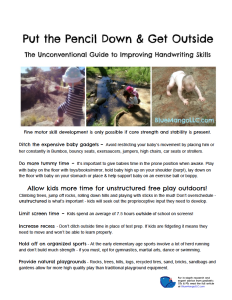 The 2-page PDF (page 1 – Put the Pencil Down & Get Outside and page 2 – Why Modern Toys are Ruining Your Child’s Handwriting) summarizes the 3 part Unconventional Handwriting Guide series and offers concrete tips to help improve fine motor skills.
The 2-page PDF (page 1 – Put the Pencil Down & Get Outside and page 2 – Why Modern Toys are Ruining Your Child’s Handwriting) summarizes the 3 part Unconventional Handwriting Guide series and offers concrete tips to help improve fine motor skills.
Print and distribute to parents, fellow teachers and family members!
Click here to download your free Tips to Improve Fine Motor Skills Handout today!

So many wonderful points! Loved reading and learning. Hope this helps many parents and families.
Great article! Thank you!
Thanks Jenny!
This article is a real eye opener..unfortunately the school systems are mainly concerned with money. Children need real outside playtime. I look forward to the next article.
Thanks Sharon! I really wish more school systems would get on board!
Extremely great information, thank you
Thanks!
In 1966 when the Finland study subjects were babies, no tummy time was imposed. There were few if any restrictive devices (as in today’s commercial baby market) to prevent free movement. So the conclusion in your writing that you infer from that study’s reporting on the subjects’ physical prowess at age 31 being correlated to tummy time is erroneous.
Thanks, for your response. When reading back over the article, you are right, it was misleading the way it was written.
I’ve edited the article and removed that section because it’s not really relevant to the discussion here – though an interesting study!
In 1966 in Finland tummy time was probably not a concept and there weren’t as many restrictive devices for babies. The study suggested that babies who achieved milestones sooner still had better physical fitness at age 31.
Since today, babies sleep on their backs (if you follow the AAP guidelines) and there are a lot of restrictive devices, tummy time is essential to proper development. The first study mentioned connected increased tummy time to babies reaching milestones sooner.
Overall “tummy time” or any time for a baby to be unrestricted and allowed to move is very important to their development – whether they will be more physically fit in their 30s or not.
Though I haven’t researched much about Finland baby culture, these research subjects may have even slept on their backs. Have you heard about the maternity package all new mothers get in Finland that includes a cardboard box for all babies to sleep in? Very fascinating!
Thanks for taking the time to read through this article, examine the research referenced and thoughtfully respond – I appreciate your engagement!
I enjoyed your article and mostly agreed. Except for the tummy time section. I think it’s about stepping back and looking at the big picture. If a child lives a life where they sleep on their back, awaken and are placed in a bouncer or rocker, then strapped into a car seat or capsule and then put into a stroller/pram/buggy/pusher (whatever they are called where you are)THEN tummy time is important.
Although this is of course completely anecdotal, my boys both HATED tummy time, to the point that it was traumatic for everyone involved. So I didn’t do it. Maybe a few times each! However I wore them both (Ergobaby and woven wraps) and I believe that this does count as tummy time. They are 18 months and 3.5 years and just about the strongest, most agile, coordinated children you have ever seen (they surpass me in spades) and they draw complex pictures, which leads me to believe that handwriting won’t be an issue.
I write this only because I remember how guilty I felt that my children would not do tummy time without full-on vomiting sobs and I remember despairing as to what the right thing to do was. I decided to just let them figure their own bodies out. A lot of floor time (both were early rollers…I think mostly to roll off their tummies because they hated it so much) and Babywearing. In the case of my second child, I slept him on his tummy (neck strength was very good) and I wish I had done it with my first as he slept so much better on his tummy. Imagine all the sleep I could have had. Thanks for your article.
Thanks for your response, Diane!
I totally understand your feelings about tummy time. I know a lot of moms whose babies hated it and would just cry and scream and any mom would not keep putting her baby through that kind of stress.
After researching all this information, I was worried that many moms would feel guilty if their babies did not experience a lot of tummy time. However, the importance of tummy time was stressed so much from PTs and OTs that I thought it was very important to include.
As you have said, I am sure there are lots of kids who did not get tons of tummy time but are strong today, as tummy time is just one of the factors that contribute to this important physical development.
I would love for an OT or PT to chime in about what parents can do if their children do not like traditional tummy time and what parents can focus on if their kids are older and the tummy time train has waved goodbye.
Here are a few articles and resources I’ve found if parents are interested:
http://mamaot.com/2014/08/11/use-therapy-ball-make-tummy-time-easier-fun-baby/
http://www.candokiddo.com/tummy-time-help/
http://www.pinkoatmeal.com/2014/08/tummy-time-therapy-blog-hop.html
There are lots of great creative solutions if your baby does not just like to be thrown on the floor. Remember tummy time only needs to last a minute at a time!
If tummy time never really worked for you, don’t feel guilty but focus on giving your child the things he or she needs now (play) to continue to build a strong foundation!
There is a school of thought that agrees with everything you’re saying except for the tummy time bit if tummy time is initiated by the parent, rather than discovered/worked towards/achieved by the baby. By putting babies on their tummy you are eliminating the process whereby they LEARN to roll onto their tummy and back again which is very important first steps in core muscle strength development and coordination. Read some of the literature against tummy time and you might find that it is perhaps not as desirable as you are suggesting.
Thanks for reading and contributing to the discussion Amanda! I would love to know some of the research against tummy time – I haven’t been able to find that so please share.
In my opinion, I’m not sure how babies would “discover” tummy time on their own as they are reliant on an adult to put them in this position – or any position for that matter as a young infant.
It also doesn’t seem that you would be eliminating the process by which a baby learns to roll through tummy time, but helping them develop these muscles and coordination. In addition, there are many steps prior to learning to roll where a baby gains important core strength and coordination.
Hi-with respect to the tummy time discussion, I have seen articles/discussion recently talking about tummy time not being appropriate till after the baby can independently roll to his/her tummy. Makes so much sense, developmentally. Again-very important to spend time on the floor out of containers. But maybe not rush them into positions their neuromuscular system isn’t designed to handle yet. Great article!
Thanks Jana! – yes, very important to keep babies out of containers. I agree one should not force a baby into a position before he is ready, but he needs time for unrestricted movement and experience in the prone position to gain these important skills.
Babies don’t master rolling over until 5 months or more – that seems like a long time not to do tummy time and I’m not sure how they would achieve that developmental milestone without tummy time!
Tummy time is an intervention or something you do to the infant. If an infant is unable to roll from back to tummy you are actually restricting the infants movement. The development of muscles needed to hold the head up are developed when infants are placed on their back and allowed to freely move. In a way tummy time is a restricted position. An infant placed in tummy time who can’t hold their head up is going to feel uncomfortable – stuck – angry. . . Look at research by the Pickler Institute or Magda Gerber. If you are advocating for the free and unlimited movement of children shouldn’t that also applie to babies?
Awesome post! Looks like you’ve provided great resources throughout. As a pediatric OT I see SO many children who either skip tummy time OR didn’t get enough time on their belly. While I understand that there’s always an exception, spending time on the tummy (prone position) helps to develop so many critical skills. There have been many, many times I’ve received a referral because I believe in re-visiting tummy time for older children who lack the core muscle strength for stability during daily tasks. The children I work with are often those who are “slouched” over their desks in school when writing or sitting in their chair in class. It’s NEVER too late to work on “tummy time!” Many of my older kids work on obstacle courses while crawling in my clinic.
Thanks for bringing awareness to tummy time and I LOVE reading your blog!
Cara Koscinski MOT, OTR/L
“The Pocket Occupational Therapist”
Thanks Cara! That’s so interesting that you have older children revisit tummy time!
Great discussion here and I love the variety of perspectives. I’ll chime in on the Tummy Time conversation with full disclosure that I’m speaking from my framework, training and experience as a pediatric Occupational Therapist specializing in infants and toddlers. I apologize in advance for a lengthy reply but perhaps some nugget in my rambling will be helpful to someone 🙂
The argument that Tummy Time is an adult-imposed position that precedes a baby naturally learning how to assume this position could be said of ALL positions we put babies in. For the first weeks and months of life, infants are dependent for a lot of things, including positioning. In the same way that putting a baby on his back to sleep is adult-imposed before baby learns to roll from belly or sidelying to back. Placing baby in a carrier for babywearing imposes an upright position before babies can assume upright. I personally and professionally believe that certain positions should be emphasized or prioritized over others due to their evidence-based effects on infant development (for better or worse, depending on the position) but I’m hard-pressed to agree with the idea that lying on the back is the true “natural” non-adult-imposed position. That said, I love this position for play and recommend it a lot (along with many other positions). And I also love and agree with a lot about some of the philosophies that disagree with Tummy Time. I try not to throw the proverbial baby out with the bathwater.
I believe a lot of the push-back against Tummy Time as an “unnatural” position is because many babies become distressed in TT. But if we look back a few decades, most parents were putting babies to sleep on their bellies. If babies were able to fall asleep there, could they have really been so miserable? And many parents report that once baby can roll to sleep belly-down, sleep improves. So why is it that more babies seem to be uncomfortable in TT. I think a lot of it has to do with when and how we introduce babies to the belly-down position and not the position itself. I elaborate a lot more on my blog so for brevity, I’ll leave it at that.
And finally, babyhood has changed. A lot. In cultures without baby holding devices/equipment/containers where babies are worn, held, or put on the floor to play and put to sleep in a variety of positions, intentional Tummy Time isn’t as crucial (as some of the previous comments mention). But as a professional, I have to address the realities of our culture – in which many babies are spending most of their awake time restricted, parents are uncertain of how to interact with their newborns or the importance of early “play” and movement, and professionals like myself are treating an epidemic of preventable, acquired conditions related to modern babyhood.
That’s my .02 from the perspective of an OT but I respect everyone’s right to their opinion. I will now step down from my TT soapbox and finish cooking dinner 🙂
Thanks for your perspective Rachel! I know several moms who complained their babies hated tummy time and would love to know more about how to change that. I feel lucky that we never had any problems with tummy time and we started her first week of life.
One way to help children learn to be on their stomach is simply for the mother to lie on her back and put the baby on her own stomach. The baby will naturally pick up her head to look at the mother’s face. The length of time can start at 30 seconds and be extended as the infant’s neck strengthens. The next step is to lie on your stomach on the floor next to your baby, also on her stomach, and look into her face and perhaps offer a toy. Another time, try putting the baby on the floor next to a mirror hung at floor level to get their attention. Once they can support themselves by pushing up, they can slither along to get a toy just out of reach (placed by you).
Love your suggestions – thanks Joan!
I loved reading your article – and all the research that went into it. I think you would appreciate what we do in our school – Nature’s Classroom Montessori, in Mukwonago, Wisconsin – http://www.nciw.org
Outdoor time is part of our classroom time and the outdoors is part of our classroom. Thank you again for pointing out the need for a solid focus on gross motor development before and then parallel to fine motor development.
Thanks Deepa! What a fantastic school – keep doing what you’re doing!
I love all of the thoughtful input I am seeing with regard to tummy time. Meghan linked to one of my tummy time articles earlier so I thought I’d join the conversation.
First off, there is so much that has already been covered in this discussion on the pros and cons of tummy time. So I won’t rehash what’s already been said.
Secondly, as I read through the comments, the biggest thing that stuck out to me (and that often comes to my mind while discussing tummy time with others) is that WE NEED TO BROADEN OUR UNDERSTANDING OF WHAT “TUMMY TIME” ACTUALLY IS. We humans can tend to be pretty black & white in our understanding of the world, particularly when it comes to issues that we either don’t fully understand or disagree with. And as people/parents who are trying to survive our baby’s early weeks and months while battling sleep deprivation, hormonal changes, and perhaps even postpartum depression, it can sometimes feel easier to think of issues of infancy in terms of absolutes — especially tummy time.
So what do I mean by saying that we need to broaden our understanding of what “tummy time” actually means? Basically, we need understand that “tummy time” doesn’t just mean placing a baby flat on a blanket on the floor and leaving them to scream until they puke or pass out. That is not humane and I would NEVER encourage that. Just like really ANY motor skill, it is developed through practice and gradual improvements. With the prone position (tummy down), this can be introduced gradually, lovingly, calmly, and even in a fun way. One commenter mentioned earlier that it can begin by the parent leaning back while baby lays on their chest. This is one of the natural first steps in both bonding with baby and introducing baby to the prone position! Pretty cool.
So how do you gradually introduce baby to being comfortable in the tummy down position? I’ve outlined 7 steps in my post on the very topic of helping tummy time be less miserable for babies, and you can read it here: http://mamaot.com/2012/03/25/tips-for-making-tummy-time-a-little-less-um-miserable/. But I’ll give you the Cliffsnotes version…The first 5 gradual steps don’t even involve being on the floor! Nope. They involve being held, played with, sung to, and zoomed around by a loving caregiver. It’s not until steps 6 and 7 that baby is on the floor. This gradual introduction to baby being comfortable and confident during play time on the tummy is something I learned from my own experience as a new parent, from a infant play/development class I took with my first baby when he was a newborn, and also from my time as a pediatric OT. By far the greatest amount of positive feedback that readers email me about is step 4 — playing on an exercise ball where you can adjust how easy or difficult it is for baby, and they can actually have fun, especially if incorporating singing and/or playing on the ball in front of a mirror where they can see themselves. More details about how to do that are in this post: http://mamaot.com/2014/08/11/use-therapy-ball-make-tummy-time-easier-fun-baby/
I do think it is important for all of us baby-loving folks to keep in mind that babies benefit from playing on ALL FOUR SIDES — tummy, back, left side, right side. It’s not JUST about playing on the tummy. Playing on the back is important for spinal development, body awareness, trunk and leg strengthening, etc. Playing on the sides is important for learning to engage at midline (both visually and with the hands), relieving pressure from the back of the skull, and preparing to learn to roll. Developmentally speaking, babies typically develop the ability to roll from tummy to back well before they are able to roll from their back to their tummy. I’ve outlined both of these developmental milestones plus links to activities and ideas to support babies in working toward each of these milestones on my “Developmental Milestones” page: http://mamaot.com/developmental-milestones/
I have received many emails from parents and even grandparents and other family members who tell me they wish they knew about all of this when their baby was little and hated tummy time. I think it just sheds light on the fact that there is a huge misconception about the concept of “tummy time” — what exactly it is, why it’s important, how to implement it with young babies both for their active development as well as to prevent issues such as flat spots and tight neck muscles, etc. And that is why I am so happy that pediatric therapists are developing websites, blogs, pamphlets, initiatives, etc. to help teach parents how to have fun with their baby while also promoting their overall development. Now if only more new parents knew about us helpful people 🙂
One final concept to keep in mind is that TUMMY TIME IS A POSITION FOR PLAY AND ENGAGING WITH THE ENVIRONMENT, not a static position or exercise. Rachel Coley (who commented earlier) mentions this a lot on her blog, CanDoKiddo.com. She has a whole tab on her blog devoted specifically to tummy time tips, trouble shooting, activities, and more.
Thanks to everyone for such an engaging conversation on this topic.
Thank you Christie for such a well thought out and detailed response! I can’t wait to share this with all my mom friends who struggled with what they felt was mandated time for the infant to be on the floor until they screamed. I love your response that babies should play on all 4 sides and that tummy time is about playing and engaging with the environment.
What a great article and great discussion. Let me just add to the support of/rational for early tummy time as a pediatric PT. As others have said before, tummy time can be initiated by something as simple as snuggling with your baby on your chest, creating a comfortable, calm place to initiate tummy time. In looking at developmental milestones, each skill builds on the ones before it, as early developmental skills develop the strength and coordination for the later skills.
Early infancy developmental milestones are as follows: at 1 month they should be able to turn their head side to side while on their tummy (this develops sufficient neck strength to lift the head against gravity), at 2 months they should be able to lift their head and chest off the floor while on the tummy (developing neck and back strength essential for rolling and sitting), at 3 months they should be able to prop on their forearms while on their tummy (strengthening neck, back, and shoulders and developing muscle coordination). Rolling is not an expected developmental milestone until 5-6 months, and rolling belly to back usually occurs before back to belly. This is not to say that babies can’t roll without exposure to tummy time, but then will compensate for true muscle strength by using different muscles, which will create and reinforce undesirable motor patterns. In addition, once a baby rolls on to his tummy, he needs to recognize this as a safe place to play. If a baby rolls onto their tummy without proper exposure to tummy time, they tend to be afraid of this new “place.”
Any position that you put a young infant in is one that they would not be able to attain on their own. Their neuromuscular system does not yet have the strength and coordination before about 5 months to roll back to belly or belly to back, or get into any position that they are not placed in. The way that infants develop this strength for movement is through play and exposure to a variety of positions.
The post above have stated many ways to introduce your infant to tummy time in gradual, comfortable ways. These suggestions are excellent! Thanks for a great discussion to all.
M Haswell, PT, DPT
Didn’t realize “tummy time” would be such a hot topic! Thanks for your perspective as an OT, Merritt!
love it. I will share it.
Thanks for spreading the word Julie!
Hello,
My name is Caroline and I enjoyed reading your article. Would you allow me to translate it into French, so as to publish it on my own blog ?
I will mention you as the original author and will add a link to your article in English.
I am convinced that my French readers will appreciate reading about your unusual approach to handwriting.
Many thanks in advance for your answer.
Best regards,
Caroline (from France !)
Hi Caroline,
That’s fine. I’m happy to provide useful content to your readers!
Great article but I disagree with tummy time. I did it with my first child as I was directed to do so by my daughter’s pediatrician. However, I did a lot of research and read books by Magda Gerber that imply tummy time is completely unnecessary if you allow your baby free movement. I’d strongly encourage looking into Magda Gerber’s work, RIE and Janet Lansbury. I have a one year old son that never had any tummy time until he could roll onto his tummy himself. And he did so at three months old. He was rarely in restraining devices (basically the car seat was the only contraption he was ever in, and it was rare) and had lots of floor time. I believe that if a child has free movement every day he will develop a strong core all on his own
Thanks Tracy – I’m glad your kids have strong core and you’ve kept them out of containers! I am familiar with Magda Gerber and Janet Lansbury. I encourage you to read through the above comments posted by pediatric occupational therapists on how “tummy time” can mean a variety of things and their thoughts on adult imposed positions. Glad you enjoyed the article and found most of it useful!
I’ve been a child development specialist for over 20 years, working with developmental pediatricians and multidisciplinary teams of therapists. I attended a week long Pikler (REI) Institute training where I was basically shunned because I strongly believe in the developmental benefits of tummy time. I have seen babies left laying on their backs because they were unable to roll over by themselves at 5-6 months due to developmental difficulties. There are a number of concerns with the Pikler philosophy as children grow older as well. The premise of the Pikler philosophy makes no sense when they say “a child should never be put in a position they cannot get in themselves (i.e. their tummy),” because someone has to place them on either their tummy or back…they cannot get into any position on the floor for that matter, unless someone puts them there 🙂 p.s. both Magda Gerber and Janet Lansbury promote the Pikler (RIE) method. As Maeghan suggested, please read the comments from the extremely knowledgable OT’s above!!
Thanks for your perspective Jane! There are a lot of great things about REI – I find myself over at Janet Lansbury often – but I encourage people not to strictly follow any one method or philosophy (even Blue Mango!) when it comes to early childhood development and education.
http://www.janetlansbury.com/2011/08/the-case-against-tummy-time-guest-post-by-irene-gutteridge/
Here’s something from Janet Lansbury
I just wanted to thank you for this article I am an educator and I have been saying this to parents for years and I now have my own child and am finishing prowl seem to want to always give me toys and gadgets I don’t want or need and prowl always say things about my son playing on the floor or cloning things but they do not know how important it really is. I hope more people see this article thanks again!
Thanks Mialanda! As an educator and parent I hope to spread this information to as many people as possible!
Awesome article! I got over here from your husband’s running site. This is exactly why I’ve decided to homeschool my preschooler. We can go outside all we want and do tons of unconventional things. And she has excellent fine motor skills already!
That’s great to hear Mindy! It sounds like you’re doing some wonderful things for your daughter.
Interesting article, but it really sends the wrong message with an app for handwriting so easily visible at the top right.
Thanks for your response, Tracy, however, I disagree. There is a time and place for both. To build the foundation for strong fine motor skills children need unstructured outdoor play. However, there comes a point when children do need to learn the names and phonics sounds of letters as well as how to accurately form each letter. This must be taught in an explicit, systematic way – especially for children with language-based learning disabilities such as dyslexia. Kids should continue to have lots of free play to build the core, upper body, hand and finger strength for fine motor skills alongside explicit teaching of handwriting and phonics.